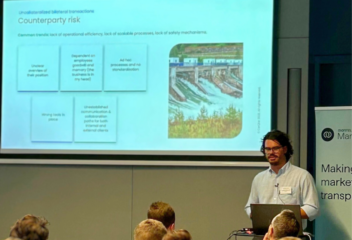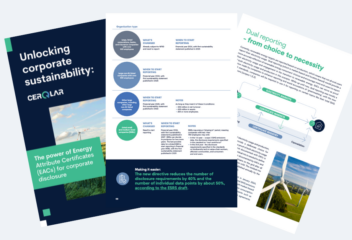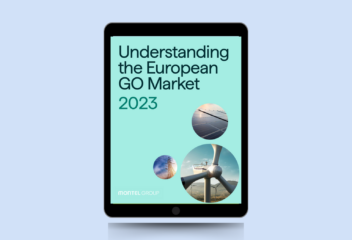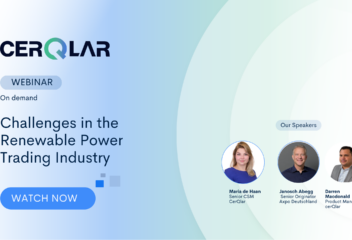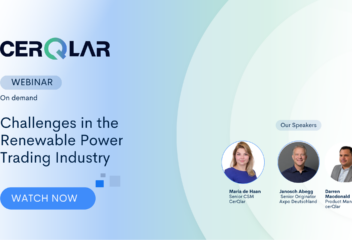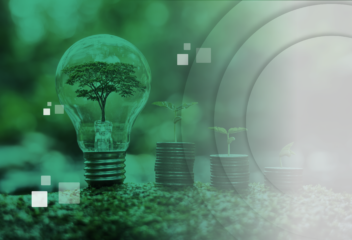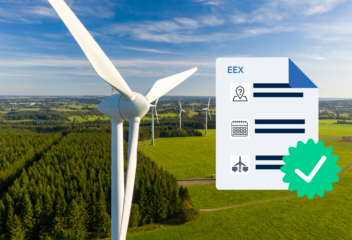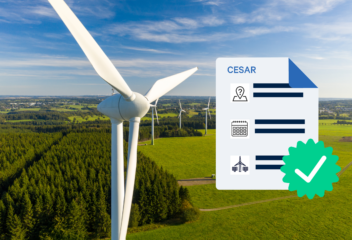The different types of Guarantees of Origin and why they matter to your organization
Guarantees of Origin (GOs or GoOs) are a crucial aspect of renewable energy sourcing and sustainability initiatives. They are certificates that provide proof that a certain amount of electricity was generated from a specific renewable energy source – i.e., transparent proof of the origin and environmental attributes of renewable energy. Because of this, GoOs play an essential role in ensuring credibility in renewable energy sourcing and supporting sustainability initiatives by promoting the adoption of clean and renewable energy sources and guaranteeing transparency and accuracy in renewable energy procurement. This is why it’s important to understand the different types of GOs available and their relevance to your sustainability goals.
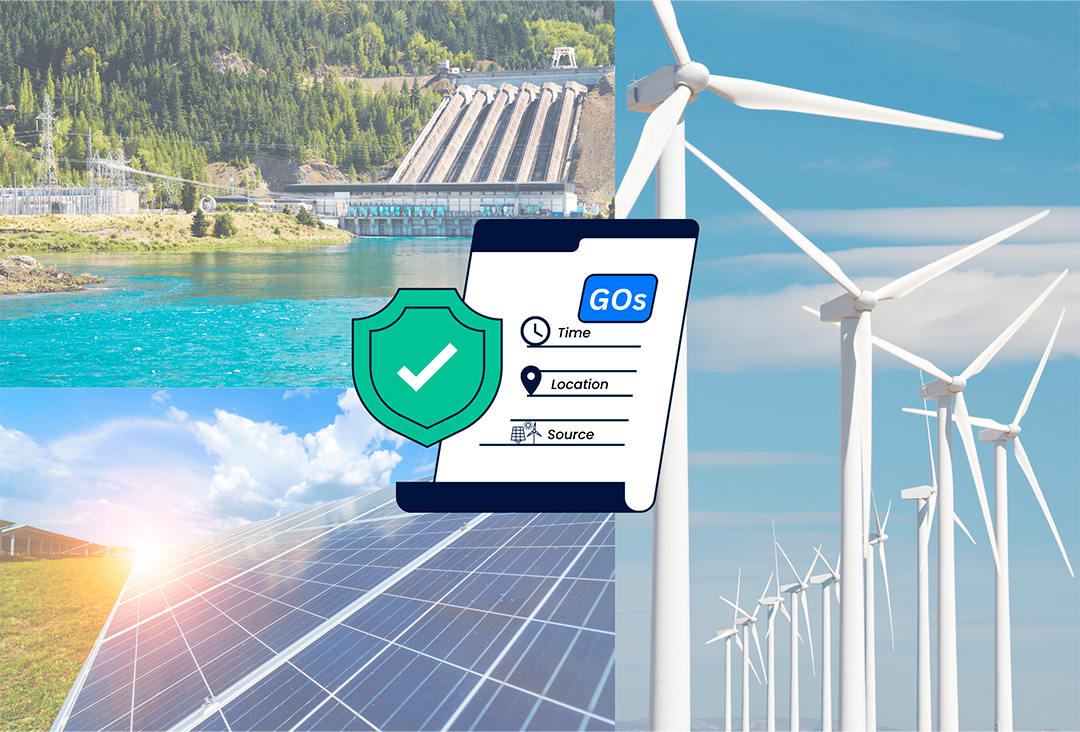
Understanding different types of GOs for renewable energy
There are different types of GOs for different types of renewable energy sources. Each type of GO represents a specific technology and location of production, which can impact its credibility and value.
Norwegian hydroelectricity is widely regarded as a highly dependable and trustworthy form of renewable energy, thanks to Norway’s dependable water sources and environmentally conscious and efficient production techniques. Meanwhile, solar power from Spain is gaining popularity due to its affordability and expandability.
The most common forms of renewable energy include:
Hydroelectricity
Hydroelectricity is the most commonly used renewable energy source in Norway, which, despite severe draughts, accounted for approximately 92% of the country’s renewable electricity production in 2022.
GOs for Norwegian hydroelectricity are highly valued due to the country’s use of production methods that support sustainability and have a low environmental impact. They are especially relevant for companies looking to reduce their carbon footprint and support renewable energy projects, particularly in the Nordic region.
Norway also plays a pivotal role in supplying hydroelectricity to other areas in the EU , but recent changes related to droughts in the region and changes to the water levels in hydro reservoirs have forced the country to implement protective policies that will help it prioritize domestic concerns and maintain its position as Europe’s hydro powerhouse.
Norway also plays a pivotal role in supplying hydroelectricity to other areas in the EU , but recent changes related to droughts in the region and changes to the water levels in hydro reservoirs have forced the country to implement protective policies that will help it prioritize domestic concerns and maintain its position as Europe’s hydro powerhouse.
Wind Energy
Wind energy is another valuable source of renewable energy, particularly in countries with large wind resources like Denmark, Germany, and the Netherlands. The Netherlands is particularly noteworthy as it provides benchmark prices for the market. This means that the prices set in the Dutch wind energy market serve as a reference point for pricing wind energy GoOs in other regions.
As a result, organizations operating in windier climates or areas with a high concentration of wind farms can benefit from the relevance and reliability of wind energy GoOs, leveraging the benchmark prices set by the Netherlands. This allows them to participate in the market effectively and make informed decisions based on the prevailing wind energy prices.
Solar Energy
Solar energy is rapidly becoming one of the most popular sources of renewable energy worldwide, with countries like Spain leading the way in solar energy production.
GOs for solar energy represent a significantly growing industry, particularly in sunnier climates such as Spain, and are expanding in popularity due to their low implementation and maintenance costs.
Additionally, IREC revealed that solar energy is on the rise in the USA, with the solar industry more than doubling over the last decade.
Thermal Energy
Thermal energy is a less common source of renewable energy, but it can be highly relevant for certain use cases, such as district heating and cooling systems. Thermal energy is only relevant to organizations with access to sources of significant underground heat.
These solutions are especially promising in the Baltic States, which have shown strong potential for proving to be lucrative sources of geothermal energy, and several states have already begun to invest in developing renewable energy infrastructure.
Hydro, wind, solar, and thermal: Which type of GO is right for you?
As we discussed in the previous section, not all renewable energy is the same, and it’s important to choose the type that best suits your organization.
Here are a few things to consider:
- What is most important to you in the green energy you choose? If it’s low carbon emissions, for example, you may want to consider wind or solar energy
- What local considerations should you take into account? For example, which form of renewable energy is most available locally, and are there any local incentives in place that support the adoption of a specific form of energy?
- What is the lifespan and durability of each renewable energy system? Which is most sustainable for your organization? For example, solar panels can last for 25-30 years but can experience environmental damage that reduces this lifespan.
- What are the potential challenges and risks of each form of renewable energy? Wind energy can be affected by wind patterns, while solar energy is impacted by changing seasons and cloud formation.
- What are your organization’s energy needs, and which renewable resource will be able to meet them? For small-scale energy needs, solar panels or wind turbines may be the best option. For large-scale energy needs, a utility-scale wind farm or a hydroelectric dam may be a better choice.
With the right GOs, you can:
- Demonstrate your commitment to sustainability goals
- Reduce carbon emissions
- Support local renewable energy projects and producers
- Comply with green legislation and regulations
Fuel mix disclosures and selecting a GoO
“Fuel Mix Disclosure” is a requirement for electricity suppliers to disclose the proportion of each energy source (coal, gas, nuclear, wind, solar, etc.) in their overall electricity supply. The IEM Directive mandates EU Member States to introduce disclosure schemes on customer invoices, informing them about the environmental impact. But, disclosure frameworks for non-electrical energy carriers are less developed.Implementing tracking systems for electricity can promote renewable energy and efficient cogeneration. Harmonizing these systems across Europe is crucial for market development. GoOs enable producers to demonstrate renewable energy sources, while label schemes like EKOenergy add additional conditions.
When selecting renewable energy, organizations should consider priorities, local availability, system lifespan, challenges, and energy needs. For example, wind or solar energy may be preferable for low carbon emissions, but availability, system durability, and associated risks must also be considered.

Learn how CerQlar can help you meet market needs
Schedule a meetingCerQlar platform: Simplifying GO management for renewable energy procurement
CerQlar is an intuitive platform that simplifies the selection and management of preferred Guarantees of Origin (GOs) for various renewable energy sources.
CerQlar’s user-friendly interface and advanced filtering options allow for easy comparison of GOs from diverse renewable energy sources and locations. Additionally, the solution provides real-time tracking of GO transactions to ensure transparency and accuracy in renewable energy procurement.
Maximizing the value of your renewable energy sourcing
To optimize renewable energy sourcing and support sustainability goals, companies need to choose the right type of GO. GOs guarantee the origin and authenticity of renewable energy sources, but their value can vary depending on the technology and location of production. Managing GO quantities and types can be challenging, but it’s crucial to ensure transparency and accuracy in renewable energy procurement.
CerQlar provides a more efficient way to manage GOs across registries, allowing you to select and manage your preferred GO types in an easier and more transparent way.
The platform includes features that allow you to:
- Easily plan future trades and settlements by viewing which certificates are assigned to specific trades
- Track changes to your inventory and earmark certificates for past or future trades
- Utilize advanced inventory management features to make long-term trading plans and implement trading strategies
- Access a uniform and easy-to-navigate interface to view and track the entire trade lifecycles of your certificates



